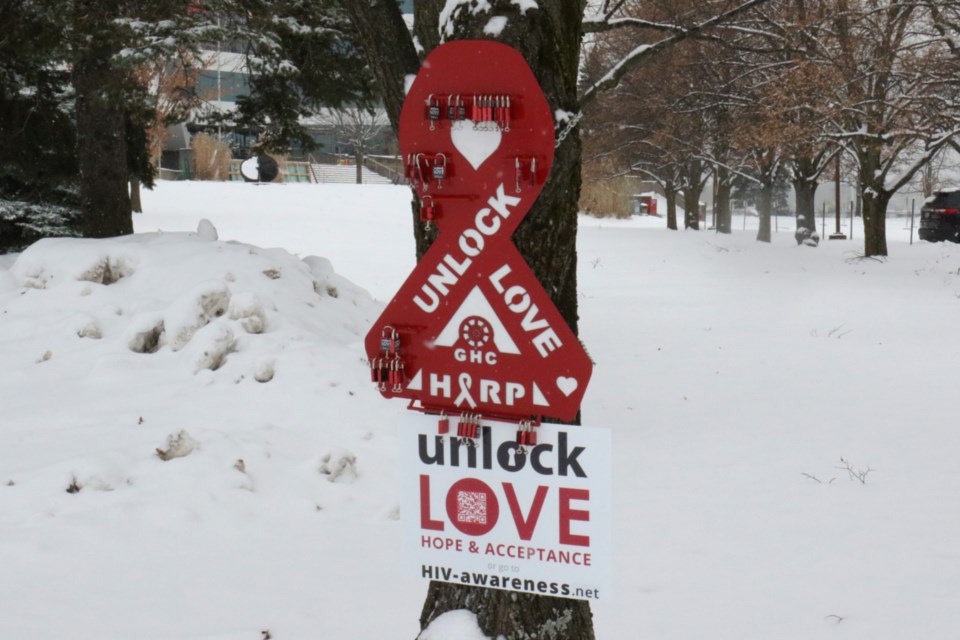The HIV/AIDS Resource Program (HARP) kicked off HIV Awareness Week Nov. 24 with its third annual Red Lock campaign, where members of the public are encouraged to take the locks from four art installations in Sault Ste. Marie.
The installations, made with the help of RedLine Cnc Metal, can be found at Fort Creek Conservation Area, Group Health Centre, Sault Area Hospital and Ronald A. Irwin Civic Centre.
“You get to take a lock from any of the displays and it’s just symbolic - you are the key to ending HIV stigma,” said HARP support services worker Shana Shana Shipperbottom.
HIV Awareness Week runs until Dec. 1, which is internationally recognized as World AIDS Day.
Shipperbottom says the theme for this year’s World AIDS Day centres on ending inequalities, AIDS and pandemics.
“They’re parallel pandemics right now. It’s been over 40 years since the first cases of HIV, and we’re still not in a great place,” said Shipperbottom. “The goal was originally to end the spread of HIV by 2030, and there’s targets set out for that - the UN’s 90-90-90 targets - but we’re still not where we need to be to actually end this pandemic by 2030.”
Shipperbottom says inequalities continue to drive both pandemics.
“A lot of the time we already do have the tools and the knowledge, but there are still inequalities that are creating barriers to treatment,” she said. “If you look at things like living wages, food insecurity, access to housing, clean drinking water - if people’s basic needs aren’t being met, they can’t even begin to address other issues.”
HARP also launched its new HIV and AIDS resource website this week, which provides information about HIV resources that are available locally, including its partner agencies.
“We got a lot of feedback from people living with HIV, the people that we are supporting - and they’re a really big part of the work that we do. Our work is not possible without their involvement or their engagement,” said Shipperbottom. “They were wanting more resources, and more images of people that were hopeful and representative of people living with HIV.”
About 50 people live with HIV in the Algoma Public Health region, with upwards of three people receiving an HIV-positive diagnosis each year.
